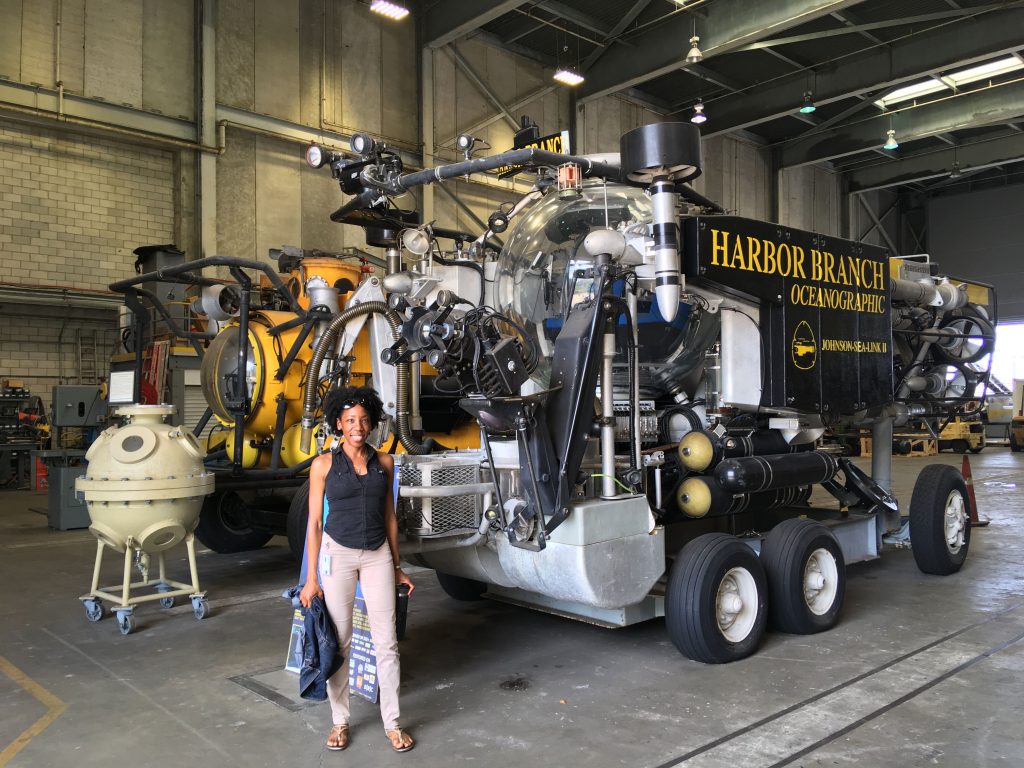The ocean supplies most of the oxygen we breathe—more than all forests and greenery worldwide—through plant-like algae that float in the sun-lit surface. These algae, called phytoplankton, form the base of the marine food web. Our future depends on a healthy phytoplankton ecosystem, but our tiny friends are susceptible to changes in seawater, including increased sediment, pollutants, or heat. As global heat increases due to climate change, the composition of phytoplankton present in the ocean is affected.
Some phytoplankton are also harmful to humans because they contain toxins. These toxins can be extremely dangerous and are a serious threat to human health and fisheries. Harmful algal blooms (HABs) have become so serious that NOAA recently allocated over 10 million USD for 2019 towards alleviating the problem. One third of that budget goes to the state of Florida, which has seen a significant increase in HABS since 2017.
This summer I spent two months on the east coast of Florida at the Harbor Branch Oceanographic Institute (HBOI) in Fort Pierce, a research institute that helps monitor HABs in the region’s largest lagoon system. I worked with ocean optics experts, Mike Twardowski and Alberto Tonizzo, to figure out a mathematical relationship between light sensed from the surface water and the concentration of the major phytoplankton in eastern Florida’s algal blooms—cyanobacteria.

The benefits and trade-offs that cyanobacteria juggle as they adapt to light color is the focus of my PhD in Kate Mackey’s group at UC Irvine. There I grow and test cyanobacteria in a lab. I incorporate ocean optics techniques to apply that knowledge to the field. I met Dr. Twardowski at an ocean optics workshop in the summer of 2018, and reached out to him early this year as a resource for potential collaborative projects. I then learned about his own cyanobacteria HABS project and was excited to get involved.
My internship at HBOI was part of my Ridge to Reef (R2R) traineeship in Urban Ecosystem Management. The lagoon system in Florida spans 40% of the eastern coast of the state, and generates billions in annual revenue. It also experiences persistent cyanobacteria blooms. We were able to prove that existing light models can successfully detect cyanobacteria in these freshwater systems. Optical detection of cyanobacteria is an asset to early warning systems. My work on HABS, in collaboration with the Florida Center for Coastal and Human Health, will improve the speed of public warnings, reducing toxin exposure to humans and domestic animals. It is a critical component to ecosystem management in the area.
At HBOI, I was able to combine the ocean optics I learned in the Twardowski research group, and the cyanobacteria physiology that I study within the Mackey lab at UCI. I’m now better equipped to gather and process remotely sensed ocean color data, turning raw numbers into actionable insights. The internship provided the resources and time I needed to work across organizations and collaborate with new partners in academia and the wider community. And it’s still paying dividends— I continue to collaborate with the team. My work at HBOI will form a chapter in my dissertation, with potential continued research beyond my PhD.
Raisha Lovindeer is a PhD Candidate & Ridge to Reef fellow studying ocean biogeochemistry in the Earth System Science Department at UC Irvine.
